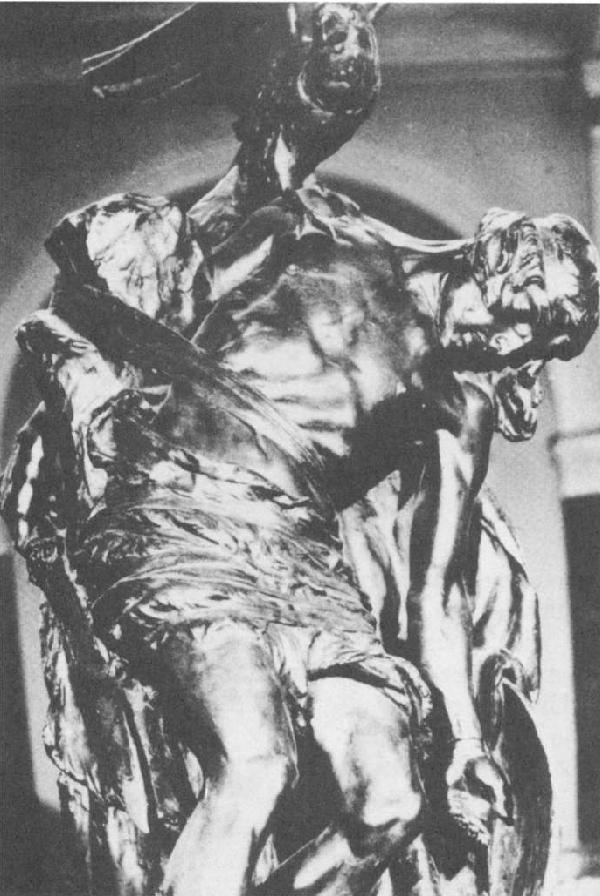 |
|
|
||
|
|
Ulsterheart Chapter 1 (Kilgreen Dawn)
pages 25 through 29
Pages 30 through 89 consist of Church history.
These will be scanned, but not displayed here
Page 25
Ulster had been founded about 300 b.c. when King Kenneth (Cimbaoth) founded Emain Maacha outside Armagh. So Ulster was the oldest of the kingdoms and princedom united in 1800, pre-dating England 829 a.d., Scotland 850 a.d., and Wales 950 a.d. by more than a thousand years.
It is difficult to establish at what stage the frontier fortifications got a nickname like 'MacDufF, but later illiterates construed this as Muc Duv—Black Pig, and incipient etymology obliged with a plethora of ghost-lore to explain the name.
For many centuries this dyke divided the Brittonic peoples of the north from the Gaelic newcomers in the south.11 Behind it the Ulaid centred on a place with a name like Ymaen, latinized to Emania, gaelicized to Emhain, and eventually anglicised to Navan.
Like all ancient invaders the new Irish tried to obliterate all traces of their predecessors, and pose as the original title-holders of the island. According to Beckett, their "historians and genealogists reconstructed the past to obscure the great diversity in the origins of the population."
The Gaels were a conquering minority who lorded it over the early Irish who were still the majority. To explain the presence of so many subject-people or "aitec tuata", as they called them, they invented a totally fictitious race called Milesians whom they alleged were the ancestors of both them and their slaves.12
But even after seven centuries of this propaganda no less a person than Columba's biographer mentions non-Gaelic peoples he had seen in the remote fastnesses of his native Donegal, still retaining their language and culture. Adam Nan was Head of an Irish colony in the Hebrides, but he grew up in the Donegal of 650 a.d. When neighbouring groups spoke their ancient dialect he knew they were different, even if he was not aware that he was cataloging the earliest Irish. Adam Nan calls them the "Crutini populi", the Critani people, substituting the Gaelic "C" for "B".
Indeed as late as the Middle Ages the dominant families in the Clogher Valley bore names that bespoke their pre-Gaelic origins. McGuire (gwyr means truth) corresponds to the name Truman.
 |
Camel reminiscent as the name of a Cornish river is more familiar to us today with the medial 'b' inserted by later Scots, just as they inserted 't' into Johnson, and 'p' into Thomson.
The Gaelic attack on the Irish people continued all through the Navan Age. Indeed it was a veritable 'Armada' assault in the 1st century a.d. that set the stage for Ireland's "Iliad". King Conor, son of Queen Nessa and Head of the Ulaid ruled the Critani from his capital the Navan Fort near Armagh when Jesus was in Palestine. Queen Maeve (the Mab of British folklore) came north from Tara with a host of Connachtmen. She tried to outflank the Wall of Ulster, and occupy Cooley, the Greenore peninsula. Before her, wide open, lay the Gap of the North between Gullion and the Mournes. But she had not counted on the Red Branch Knights and their young Homeric champion, Cuhulin, winning his Thermopylae.
But three centuries after the Cuchulain Epic the Wall was penetrated and the Navan captured. The Royal Family escaped east of the Bann, and for eight centuries Ulster was the size of Antrim and Down with segments of Louth and Derry. To protect this reduced Ulster they built a great earthen Wall from the Bann marshes in north Armagh to Newry. In the Middle Ages it attracted the misnomer "Dane's Cast".
So, by 400 a.d. the older Irish were a subject race in most of Ireland from Bantry to the Bann. Professor Beckett tells us that the Gaels "treated the existing population in much the same way as they themselves were to be treated by later invaders. They killed some, dispossessed others, and compelled the rest to pay tribute."
This was Ireland's fourth transfusion. Two more were yet to come
| CRITANI | about 2500 b.c. |
| BOLGI | about 450 b.c. |
| LAGINI | about 300 b.c. |
| GAELS | about 50 b.c. |
| NORSE | about 800 a.d. |
| ANGLO-SCOTS | about 1600 a.d. |
 |
Each wave subdued its predecessors. No one of these six strands can be singled out as THE IRISH. All five waves were 'planter stock'. Professor Beckett correctiy concludes "Ireland has no aborigines."
When the Gaels over-ran the territory west of the Bann, the older language did not vanish overnight. The Ulsterheart was for
long bilingual. So when Ninyan led the first Christian missionaries who arrived in Ulster about 400 a.d. from Whithorn in Galloway they could be understood, and high noon follow the Kilgreen Dawn.
| End of Chapter 1 |